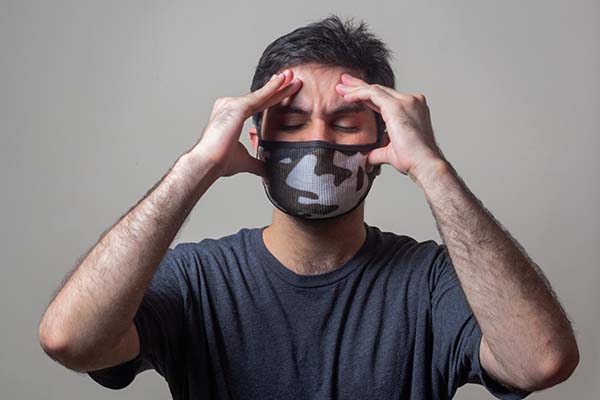A deviated septum occurs when the septum, the cartilage, and bone that separates the nasal cavity, are off-center. Some people are born with a deviated septum. For others, a nose injury causes it. A badly deviated septum may cause breathing problems, congestion, and headaches. Surgery can repair a deviated septum.
What Is A Deviated Septum
The septum is the tissue wall that divides the two nostrils. Both nostrils should be absolutely symmetrical in theory, still, this isn’t always the case. You have a deviated septum if the difference between the two is large. A deviated septum can occur naturally or as a result of an injury or trauma.
What Causes A Deviated Septum
An injury to the nose can beget a deviated septum. Nasal injuries may occur due to:
- Sports
- Falls
- Car accidents
- Getting hit in the nose during an accident or fight
A deviated septum may also be natural, or present at birth. The deviation may be from a delicate birth or connective tissue disease.
It may also be a result of normal development. As the nose grows, the septum also grows and can occasionally grow towards one side. This is generally the most common reason to have a deviated septum.
What Are The Symptoms Of A Deviated Septum
Difficulty breathing With a deviated septum, one nasal passage may be narrowed or obstructed, making it delicate to breathe through the nostrils. This type of inhibition may be indeed more pronounced when you have an upper respiratory tract infection, like a cold, or disinclination, which beget your nasal passages to swell.
Nasal Traffic Because the nasal passages are uneven, one side may accumulate further traffic than the other, or one side may feel fully stuffy or dammed.
Facial pain A severely deviated septum could beget one-sided facial pain, tenderness, and pressure in the nose.
Sinus pain and sinus infections The sinuses are air-filled pockets in the face. A deviated septum may help proper drainage of mucus from the sinuses into the nasal cavity. When the natural sinus drainage process is obstructed, bacteria can grow in the sinuses, leading to infection and inflammation, and causing sinus pain and pressure.
Nosebleeds Because of turbulent airflow through a deviated septum, the nasal passages can become dry, which increases the chance of getting nosebleeds.
Headaches If air can’t flow freely, it can lead to passions of dryness and built-up pressure, causing headaches.
Sot Mouth People with a deviated septum may find breathing through the nose delicate or unpleasant and so may instinctively breathe through the mouth more frequently, which can lead to a dry mouth and chapped lips.
Snoring Snoring and noisy breathing can be a sign of a deviated septum because of the narrowed passages and blocked or intruded tailwind.
Tendency to sleep on a particular side Oftentimes, people with a deviated septum don’t realize they have a tendency to sleep on one side over the other in order to optimize breathing through the less obstructed nasal passage.

Treatment Of A Deviated Septum
Treatments for a deviated septum are fairly low risk. For numerous people, the benefits of symptom relief far outweigh the risks.
Still, you may try nasal sprays and antibiotics to clear up the infection and manage symptoms, but these are short-term results and sinusitis may keep recreating if an undressed deviated septum is the cause, If you witness frequent sinus infections( sinusitis) from a deviated septum. In fact, a deviated septum can come more severe as you age, so if you don’t address it, symptoms, including recreating sinus infections, may worsen over time.
The most effective way to treat a deviated septum is with a deviated septum form procedure. When a deviated septum is repaired internally and functionally, it’s known as a septoplasty. When a septoplasty is combined with an ornamental element, it’s known as a septorhinoplasty.
A septoplasty corrects the nasal septum divagation on the inside of your nose, uncurling the septum so that nasal passages are indeed and allowing proper airflow for better breathing. Septoplasties, if mild, can be performed under original anesthesia, still, more generally they can be done as an outpatient procedure in 30- 45 minutes.
In a septoplasty, Dr. Cohen will make a veritably small incision inside the nose. The septum is corrected without breaking any nasal bones. After surgery, no cast is demanded and most patients don’t experience external or visible bruising. Recovery is quick, with utmost patients returning to normal conditioning within a week.
When the procedure is purely functional, it’s generally covered by utmost insurance companies to address a deviated septum for breathing problems. Nevertheless, you may have a copay or deductible that will need to be taken care of. When a septorhinoplasty is used to reshape the deviated septum and to make ornamental changes, insurance will frequently cover the functional part of the procedure which can be a cost- savings, still, the ornamental portions will be out of pocket.
A septorhinoplasty is a short outpatient procedure in which the surgeon makes small incisions inside the nostril, and occasionally across the base of the nose. Cartilage and inner bone are reshaped as asked. After rhinoplasty, a nasal flake is worn for about a week and most people witness some minor bruising and swelling around the nose for a few weeks.




